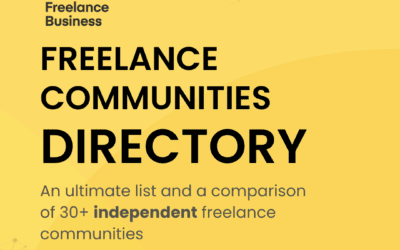Turning to freelancers and other independent workers to assist in the operations of your business is a winning move (Not convinced? Click here!)!
Welcoming them to your team, however, consists of much more than emailing them a project brief and waiting for results. Making the effort to integrate the worker to your team will show that you respect them as a person and that you value their work. With the help of our partners from Charipickers, we have outlined the steps you can take to ensure the onboarding, engagement and offboarding processes are done the right way.
Step 1: Ace the job description and interview
Just because contingent workers are independent and proactive, it doesn’t mean that they will automatically know what you want from them. A UX designer, a photographer and an copywriter can all do many different tasks, so it is important that you define the scope of the project and what exactly their involvement is. This will not only ensure the relationship is fair, but will help you pick the best suited worker for your needs.
During the interview, explain the scope of the project to the freelancer and make sure they are comfortable with it. You can give traditional employees new assignments as they come, but with freelancers, you need to know what tasks they will do, and refrain from asking them to do more than they agreed to.
Step 2: Contract, payment and admin
Creating a contract for the project will not only give you and the freelancer peace of mind, but will make the project official and help you avoid issues like fake independency. If your business isn’t large enough to use in-house lawyers, this is no excuse to skip this step – we have already covered the basics of creating a freelance contract, and you can find plenty of templates online. Do they need to sign an NDA? Will they have access to sensitive data? All these things need to be taken into account. Still have questions about what a good contract should look like? Contact Charipickers.
Agreeing on a payment scheme (hourly rates, project based, etc.) can have a big impact on how you compensate your freelancers. Talk with them, and pick the option that works best for both. Freelancers are often responsible for their own taxes, so keep that in mind when calculating the compensation. See more here.
Step 3: Team introductions and integration
A freelancer can be working remotely, supporting a single aspect of your business, or they might be the leading force in a project which involves many employees. Either way, make sure to introduce them to your team and encourage networking! You might also assign the freelancer an in-house “buddy”, who will help them socialise. Freelancers may be independent, but they still enjoy making new connections!
It is recommended that you provide your freelancers with a corporate email address. Firstly, your proprietary information and communication will stay on your company servers, and secondly, your freelancers will not look ”different”from the rest of your team. Your team will not question whether this email account is legit and if this person is actually part of the team. If your company is tech-savvy, linking the technology access to your corporate email (Single Sign-On or SSO) is also easier than to a private Gmail account.
Pro-tip: Also when creating an email address, don’t add “ex_” before the address, for example ex_collegue@company.com .”Ex” in this context may read as ”external”.
Step 4: Continued support
This step is often ignored by many business owners. Just like for traditional employees, the door to your (virtual) office must be open for freelancers who have questions or need support. Let them know you are available!
Even if they don’t reach out, make a habit of checking on them and asking if there’s anything they’d like to share!
Step 5: Offboarding
The final step is just as important as the first one! When the project finishes and you and the worker are ready to part ways, there are a number of things you can do to make the transition smooth. You may want to schedule a feedback session to learn how the collaboration went and learn from each other. You may discover the ways to improve your work with freelancers.
Are all the documents signed? Have you paid all the invoices? Few things leave a worse impression than delayed payments.
Let your team know the freelancer is leaving, so they can send farewell messages! Encourage them to stay in touch afterwards!
Step 6: Feedback and reviews
Take the time to write a recommendation on Linkedin and leave a review on the freelancer’s platform of choice. This little gesture helps them out a lot!
If you have any contacts in your network who might be interested in the services of the freelancer, recommend them! Word of mouth is the easiest way for freelancers to land new projects!
Regardless of whether this is your first or fiftieth time working with freelancers, always treat them fairly and with respect, even though they are not in-house employees. For more help with sourcing talent and managing the admin side of the relationship, visit Charipickers to learn more. Happy recruiting!




